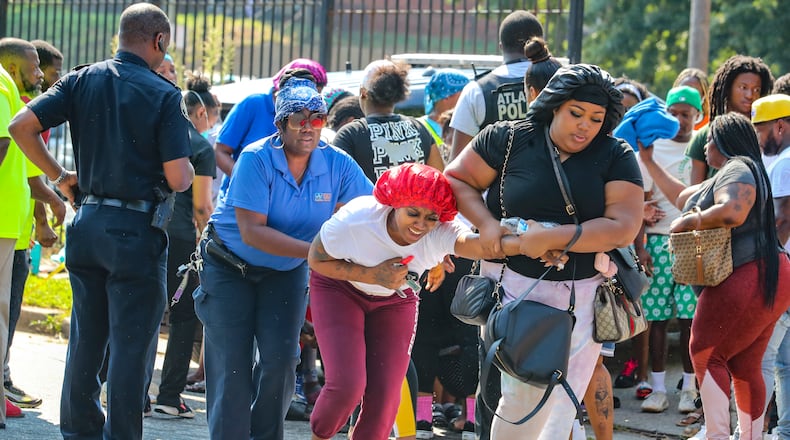People tell me all the time, “It must be really difficult for you to cover murders.”
It’s not close-up and personal for me. For the homicide detectives, the uniformed officers and the crime scene technicians, it is. Very much so. But being off at a distance, whether it be 20 yards or 100 yards, with a hunk of glass mounted on the front of a DSLR camera, the activity around a deceased shooting victim can seem distant and two-dimensional.
At night, the scenes take on a unique feel and look. The flashing blue lights from patrol cars blocking off the taped perimeters can be blinding. The entire area is illuminated in this blue haze.
You’re usually not privy to all the details of what happened right away. That usually comes later when a ranking homicide detective or commander speaks to the media. As you stand around with your media colleagues, it becomes an exercise in documenting police work. Capturing the interaction of detectives and photographing CSI technicians as they plot numbered evidence markers where shells and other evidence are found. You’re also looking for weapons when they are discovered or placed into evidence bags.
When friends and family are on hand, it can become emotionally charged very quickly. And if you come to a scene where there are already numerous persons there, like outside of a club, residence or apartments, the grief and anger can escalate and feed off one another.
As a journalist, it’s in these moments you enter into a zone, respectfully and discreetly making images of reactions of family and friends as they break down and console one another. These images of grief and anguish usually hit readers the most.
Homicide victims are not statistics. They are people who had family, co-workers and friends.
A family is never the same after a loved one is taken by a violent act. I know this firsthand. My older brother’s good friend, a Vietnam veteran who shared his combat experiences with me, was shot to death in 1980. A close family member took their own life by gun in 1991. Nine years later, a cousin I was close to in age was shot to death.
I decided a long time ago that I would not just take photos and take information from the scenes of homicide investigations. I had to give something while I was there.
Aside from something journalistically, that something I do is spiritual. I pray the grieving families’ burdens may be lightened and mercy cover their loved ones. I even pray for the perpetrators, as radical as that seems. Christian ethics demand prayer for our enemies. Even murderers like Moses and Saul were given the time and grace to change. And eventually, they became great lights for good. My prayer for a perpetrator is that their prison cell become a monastery.
It is easy for media audiences to become desensitized and dismiss the latest homicide as just another one. That’s especially true for stories absent of a visual component. Images change perception and understanding.
That’s my main driving factor when covering homicides. If people are gunning down folks at the local gas station, I’d like my family to know about it.
It’s also important to report what prompted the violence. Is the public in danger from an assailant on the loose? Was it gang-related or random? Even a domestic situation has the potential to place the public in danger.
Sometimes detectives don’t want to release preliminary details in fear of jeopardizing their case or tipping off a person of interest too soon. I believe disseminating the information to the public is a matter of public safety.
I’ve remarked to colleagues about how the Atlanta Police Department’s homicide unit does such thorough work and gets a lot of cases solved. And of course comes the answer, “They have plenty of practice.”
Photojournalist John Spink began his career with the Kansas City Times and was part of the Pulitzer award-winning staff that covered the 1981 Hyatt Regency Disaster. He joined the The Atlanta Journal-Constitution in 1984 and has photographed a variety of news stories and sports, including Super Bowls in Houston and Atlanta and the Braves’ World Series celebration. He has covered breaking news since 1996.
About the Author
Keep Reading
The Latest
Featured



